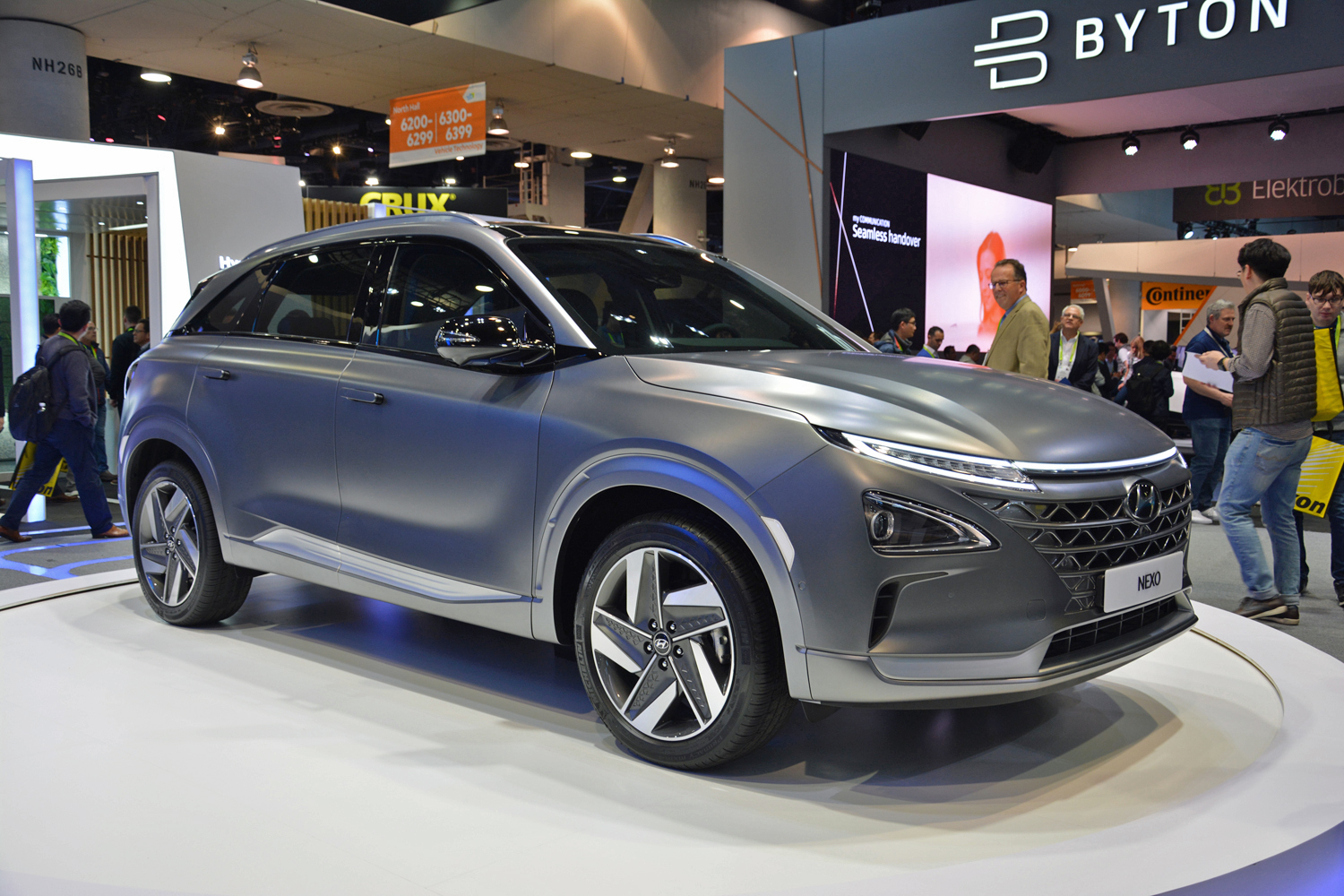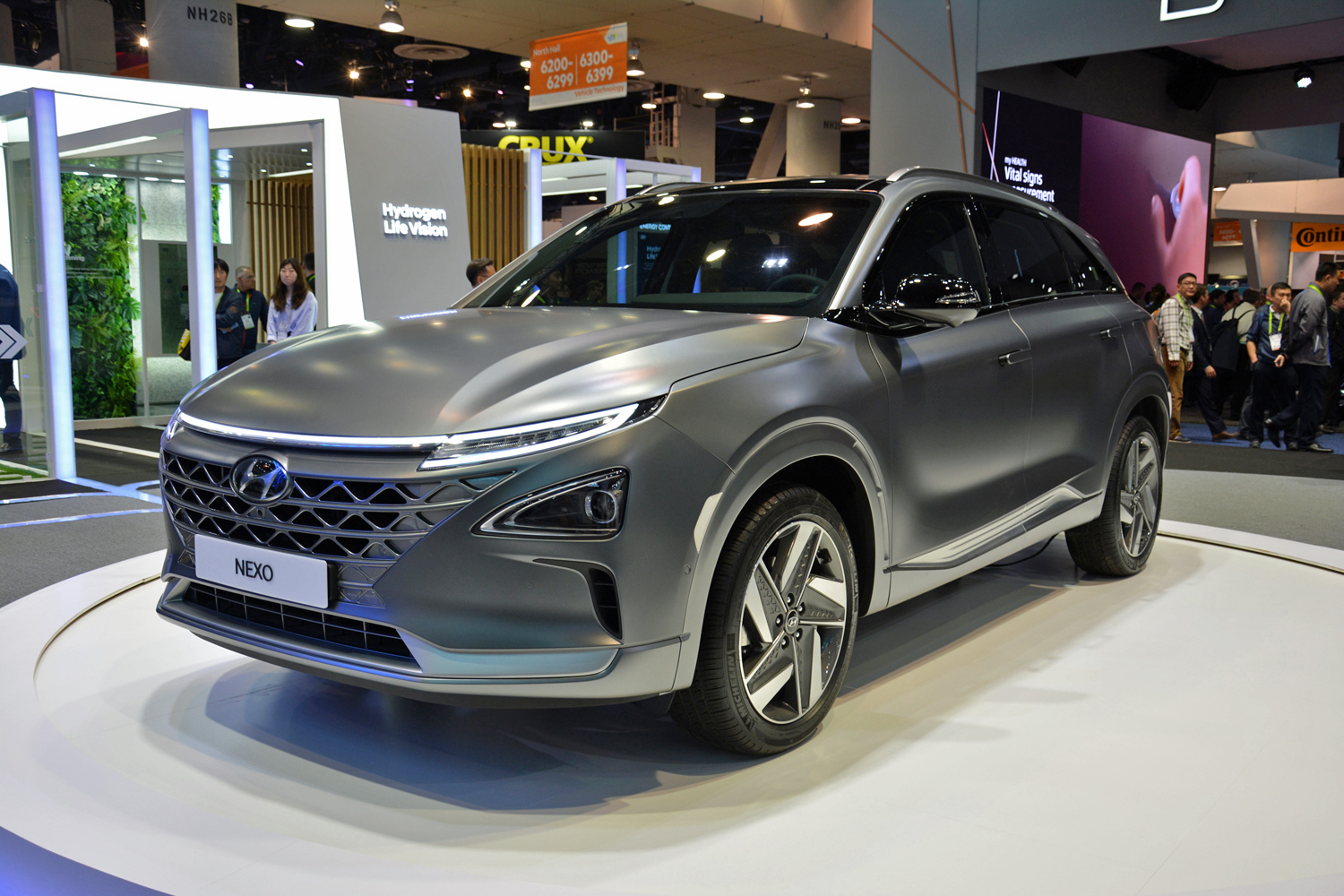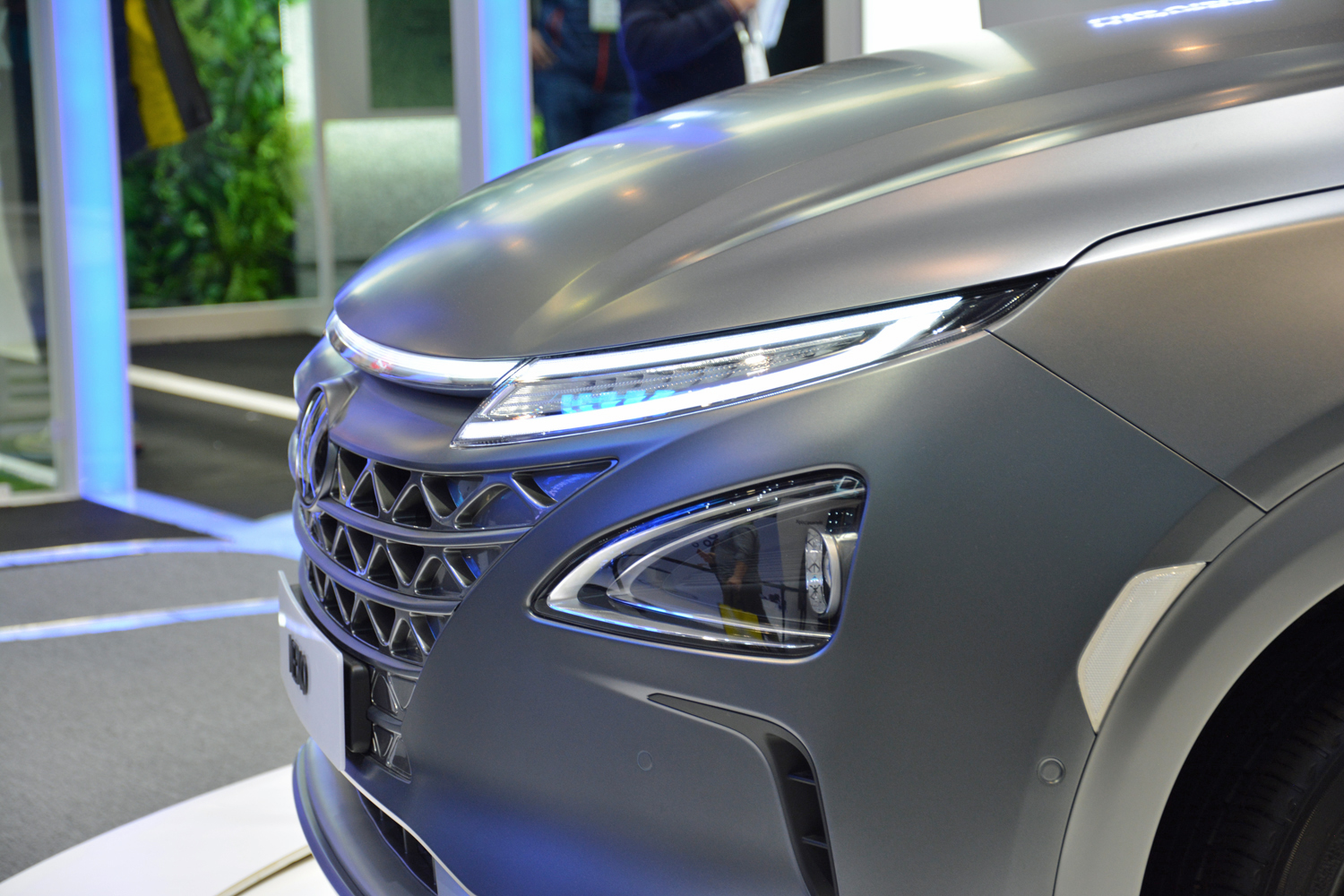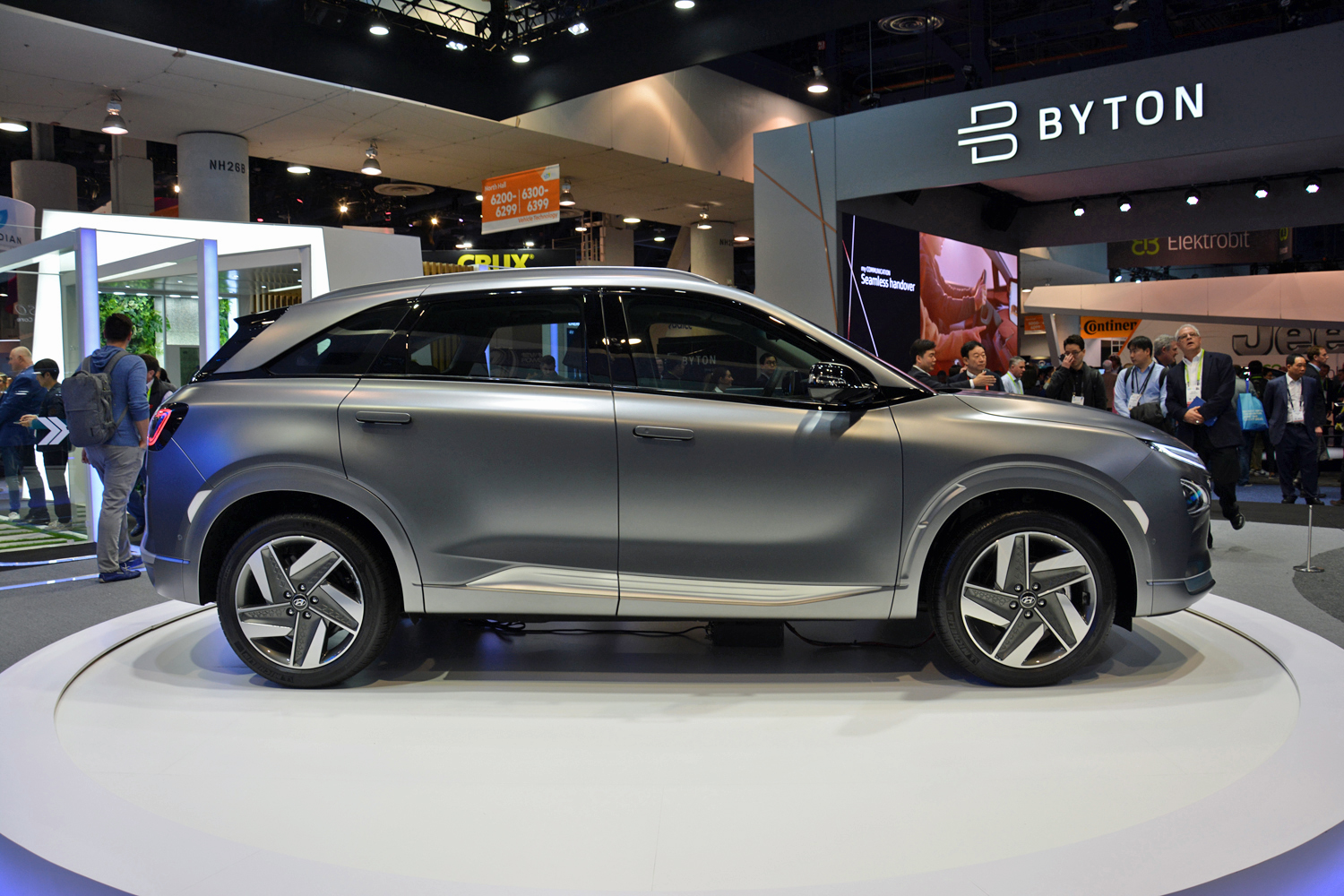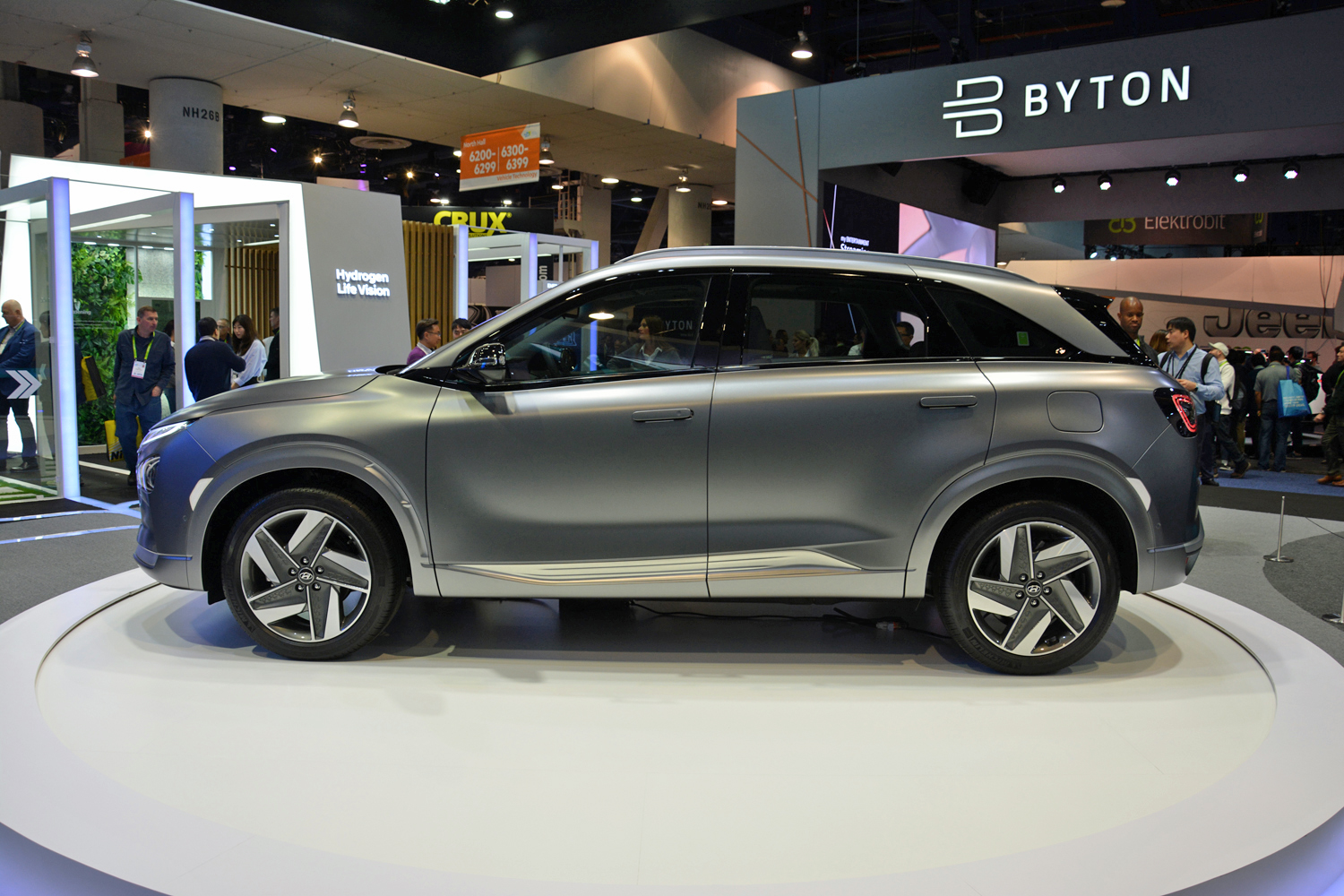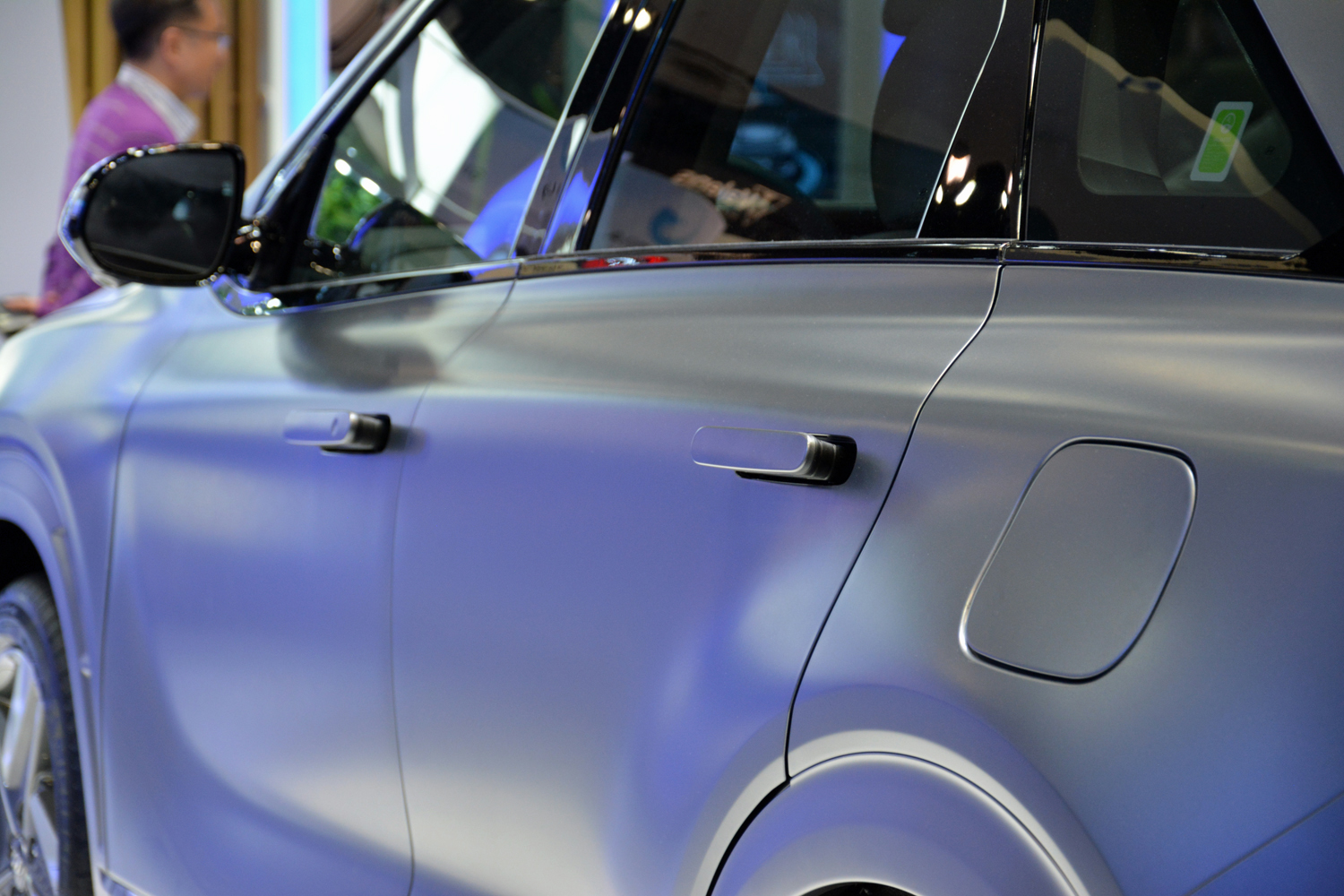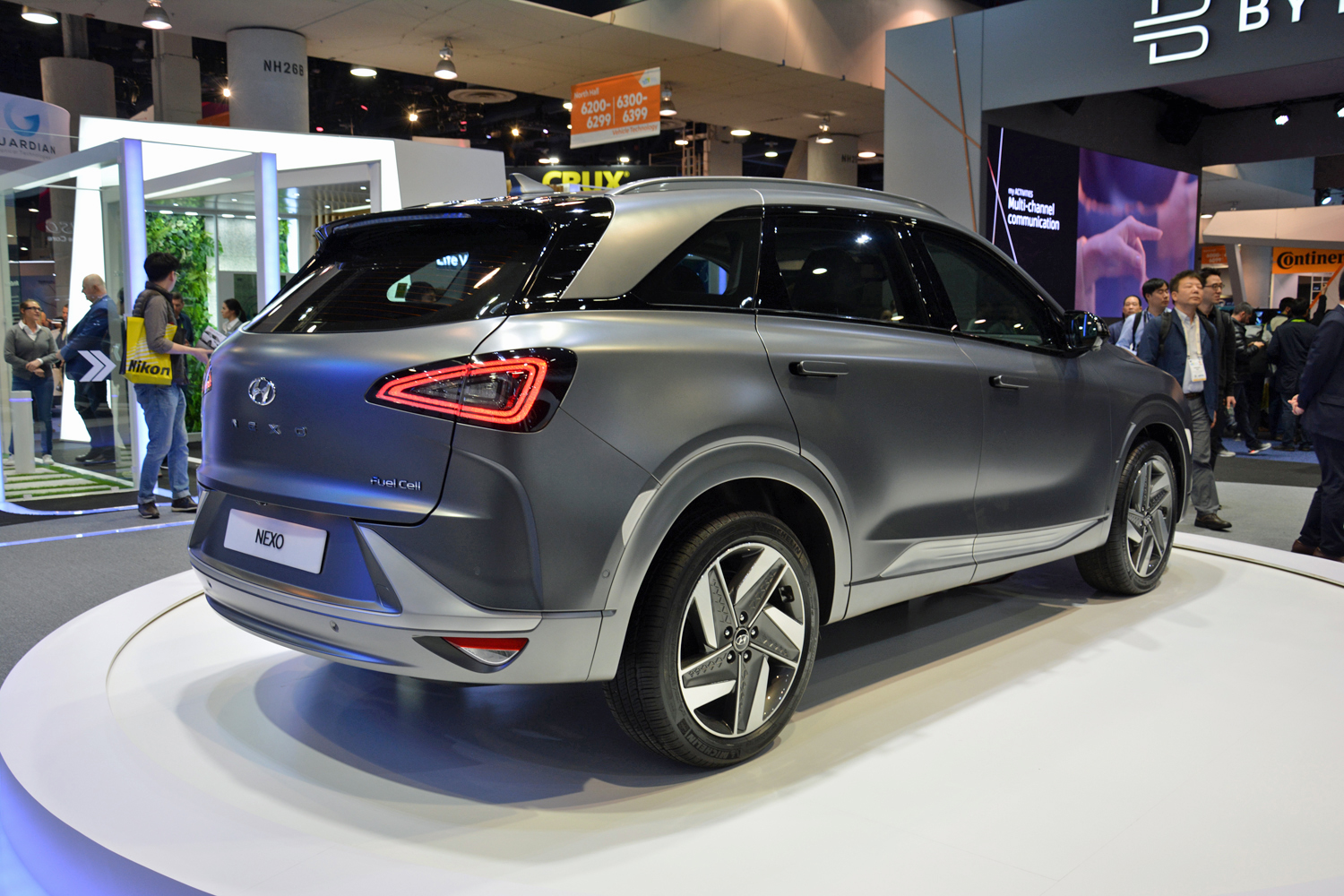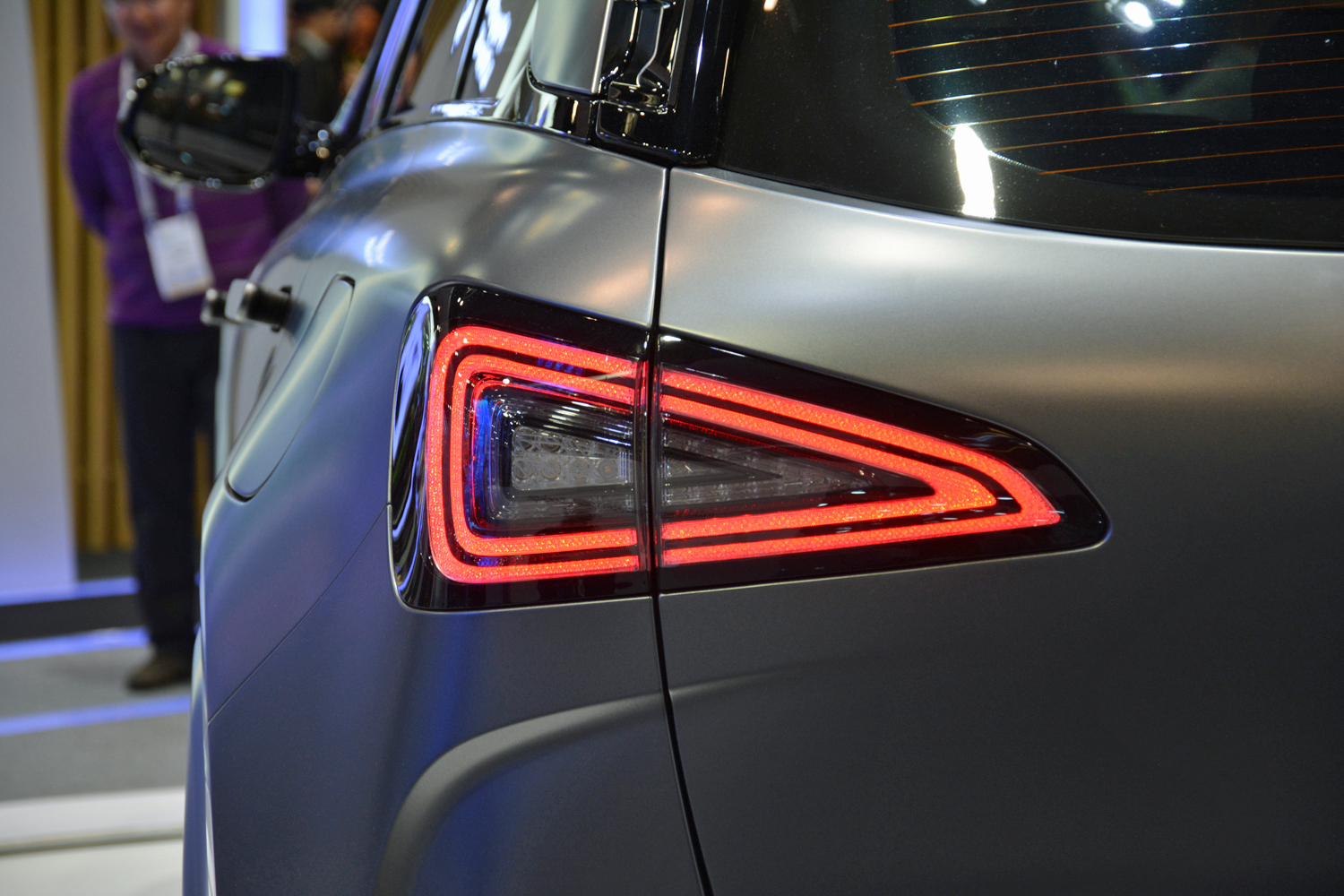Hyundai beat Toyota and Honda to the punch with the Tucson Fuel Cell, a hydrogen-powered crossover it introduced in select markets in 2013. Named Nexo, the model’s replacement made its American debut at CES 2018.
Unlike the Tucson Fuel Cell, which was based on a conventional gasoline-powered vehicle, the new crossover is a stand-alone model with its own design. This move signals the technology has matured significantly in the past few years.
The styling draws heavily on the Hyundai FE Fuel Cell concept first seen last year at the Geneva Motor Show. The production model retains the FE concept’s flowing lines, but with some more realistic details like more-adequate lighting and actual side-view mirrors. The door handles sit flush with the bodywork to reduce aerodynamic drag. Overall, the design advertises the fact that this isn’t an ordinary car without resorting to the weirdness of the Toyota Mirai or Honda Clarity Fuel Cell.
For the most part, the interior looks like it could be taken from any current production Hyundai. The big exception is the long screen running across the instrument panel. It seems to function as both an instrument cluster for the driver and an infotainment screen for the passengers, a setup similar to what you get in a Mercedes-Benz S-Class or E-Class. The screen also supplements the rear-view mirror by displaying footage of the Nexo’s blind spots whenever the driver changes lanes.
Lane Following Assist, which keeps the vehicle in its lane at up to 90 mph, and Highway Driving Assist help motorists when driving becomes tedious or tiring. The Nexo can also pull in or out of a parking spot autonomously, with or without the driver in the car.
The fuel cell system is more efficient than the one found in the outgoing Tucson, according to Hyundai. It produces 291 pound-feet of instant torque, enough to send the crossover from zero to 60 mph in 9.5 seconds. More importantly, it provides up to 370 miles of driving range while offering the same level of durability as a comparable gasoline-burning model. The hydrogen carried on-board is used to generate the electricity that zaps the electric motor into motion. The torque is instant, and the Nexo is completely silent to drive. It emits only water vapor.
Leveraging the benefits of economies of scale, Hyundai revealed it will use its fuel cell technology to build sedans, trucks, and buses. It stopped short of providing additional details, though.
What’s next?
Autonomy is a big part of Hyundai’s vision for the future. The South Korean firm recently announced it teamed up with Aurora, a start-up founded by ex-Google autonomous car boss Chris Urmson, to build self-driving prototypes based on the Nexo. They will join pilot programs in major cities in the coming years. The data gathered will help Hyundai and Aurora bring level four technology to a regular-production model by 2021.
Alongside the new fuel cell SUV, Hyundai appears to be hedging its bets. At the SUV’s Seoul reveal, Hyundai also announced that it will launch several new battery-electric cars, including an electric version of the Kona SUV in 2018, an electric Genesis luxury model in 2021, and a third model with a range of 500 km (310 miles) after 2021. Hyundai will also launch a dedicated platform for electric vehicles, making it easier to develop additional models.
Hyundai’s future plans include eight battery-powered and two-fuel cell vehicles across multiple brands, according to Reuters, noting that this constitutes a major shift from 2014, when Hyundai only planned on launching two battery-powered vehicles. Despite bold talk of a fuel cell future, the realities of hydrogen, such as lack of fueling infrastructure, may be catching up with Hyundai.
Updated: Added full details about the Nexo.
